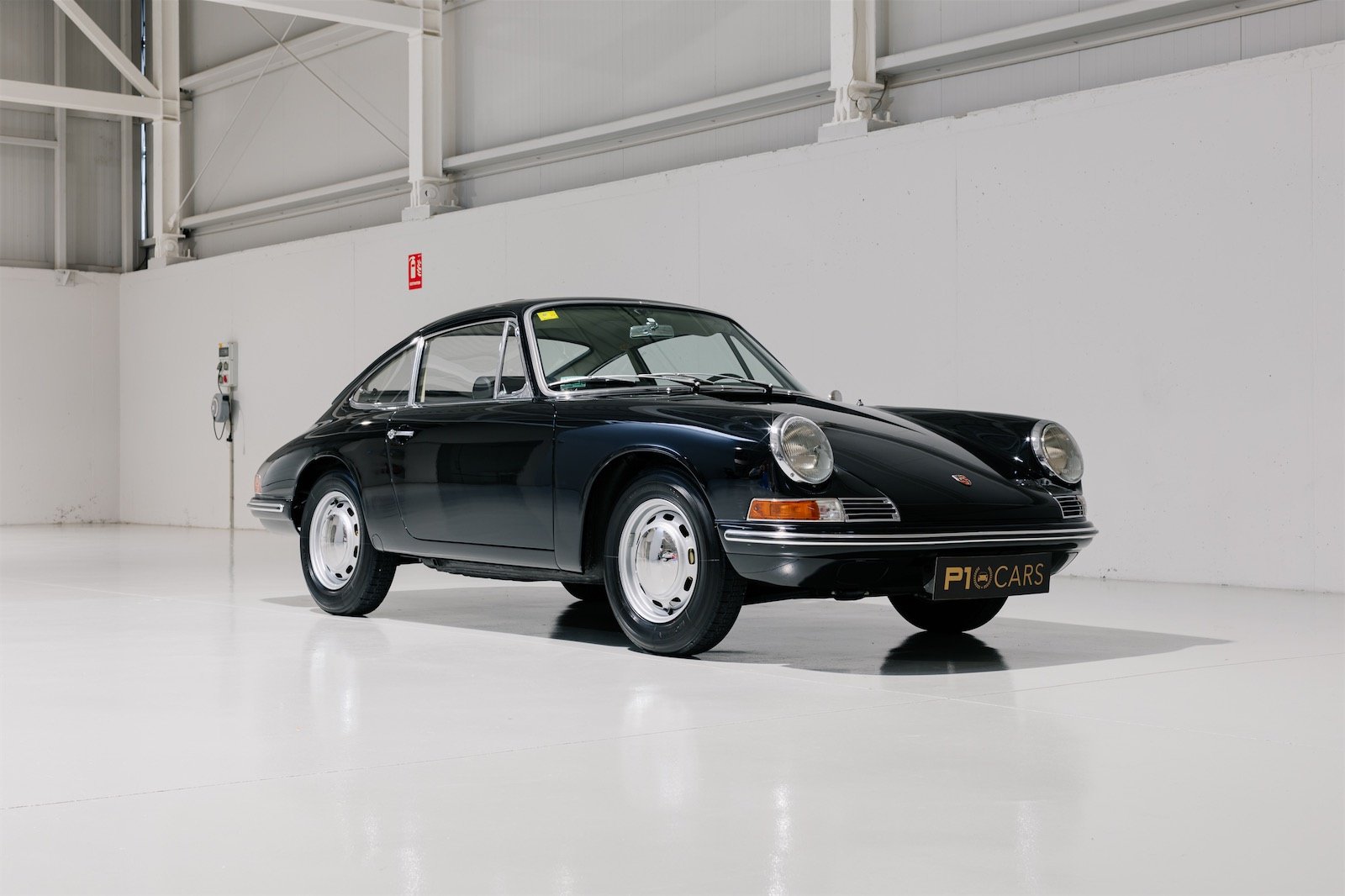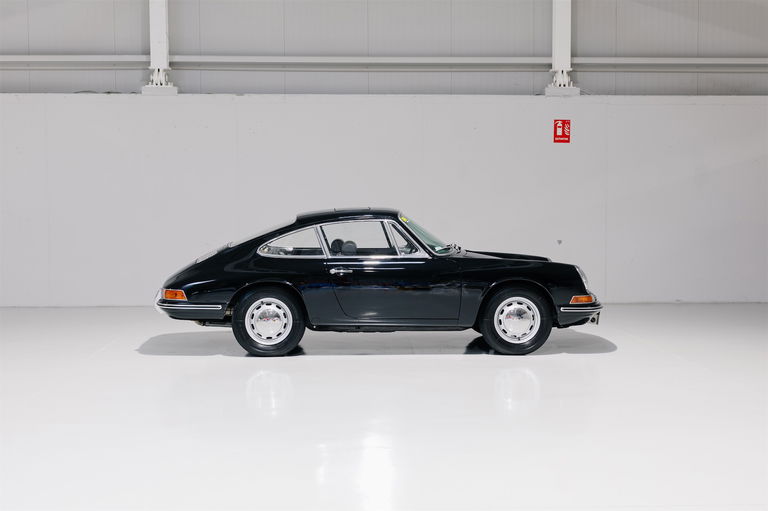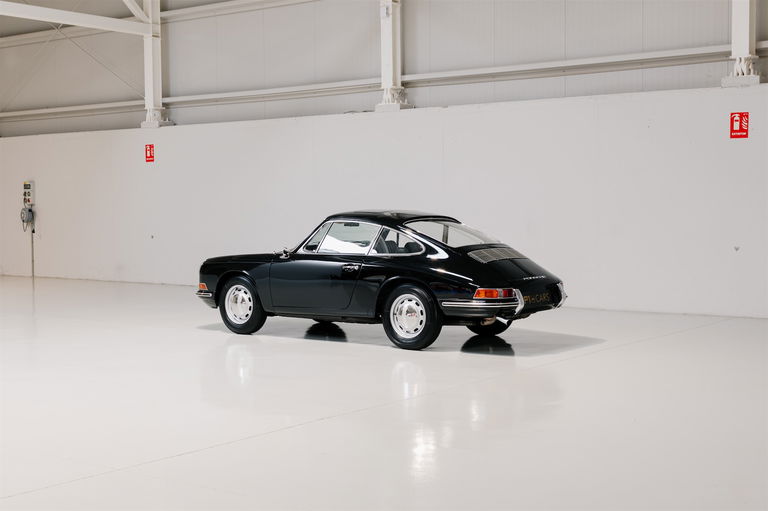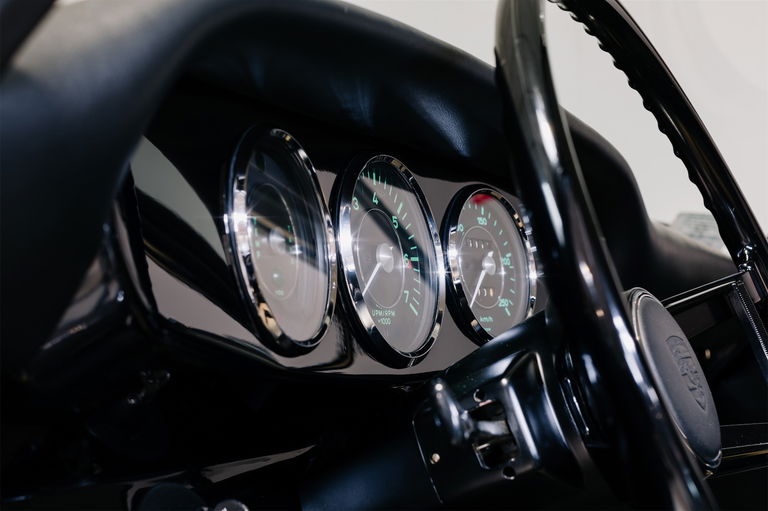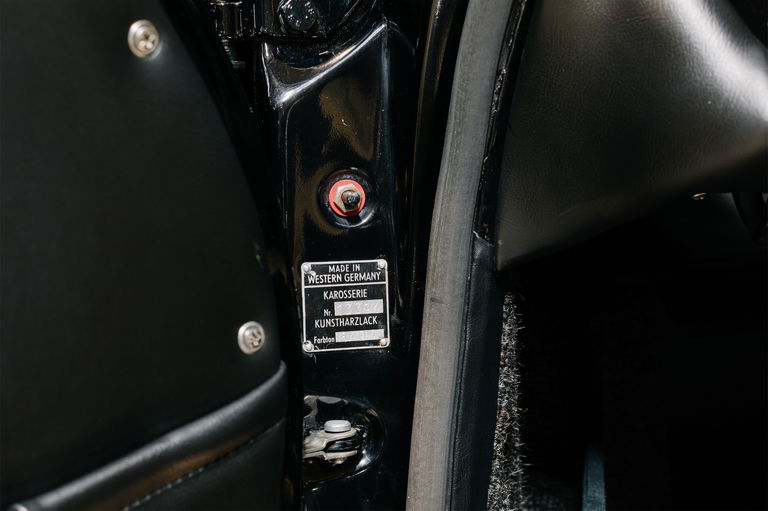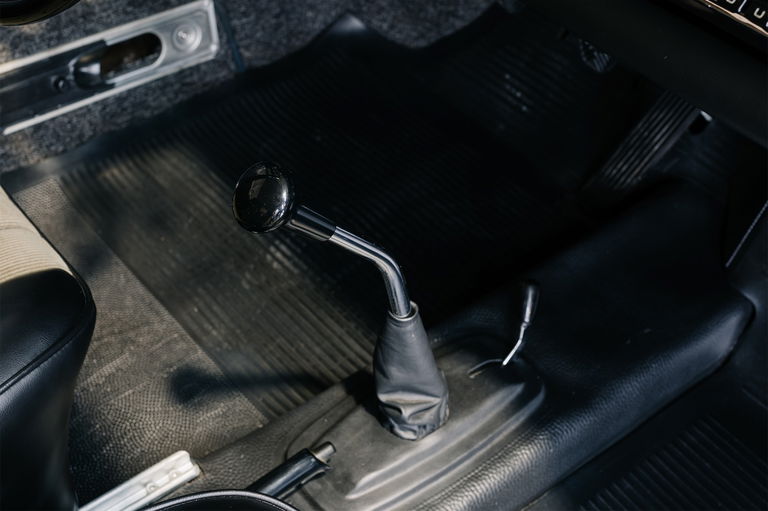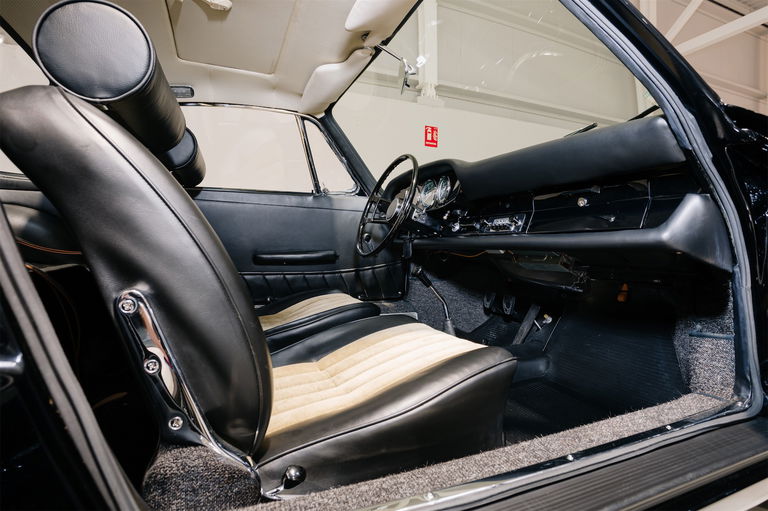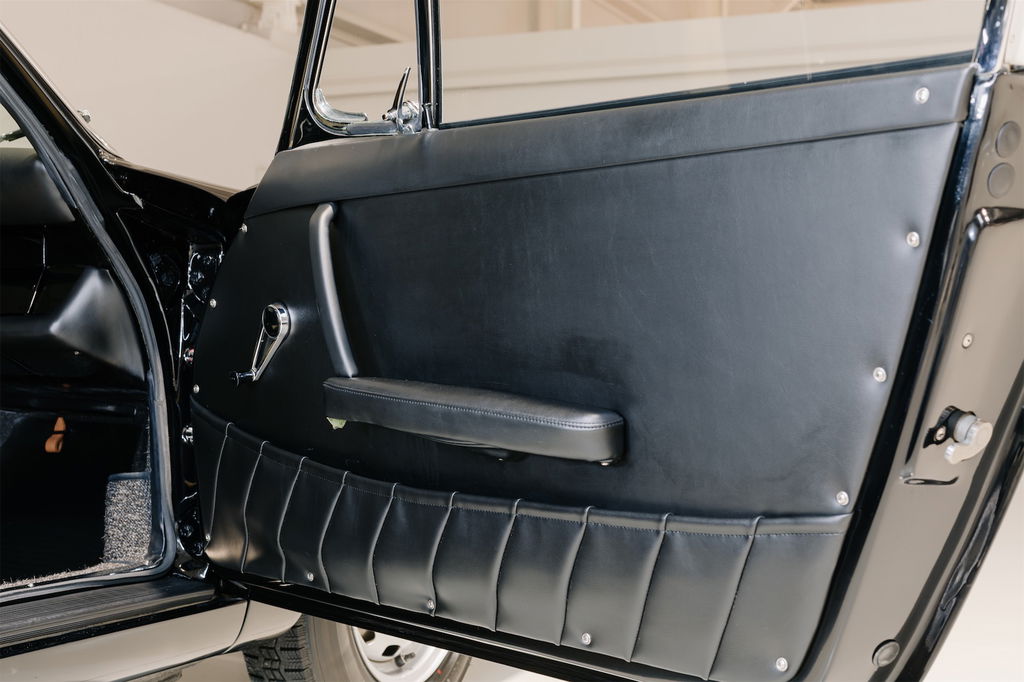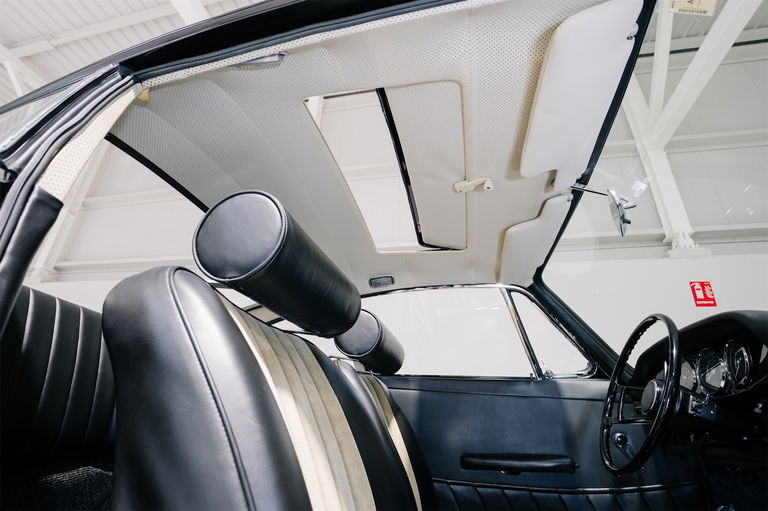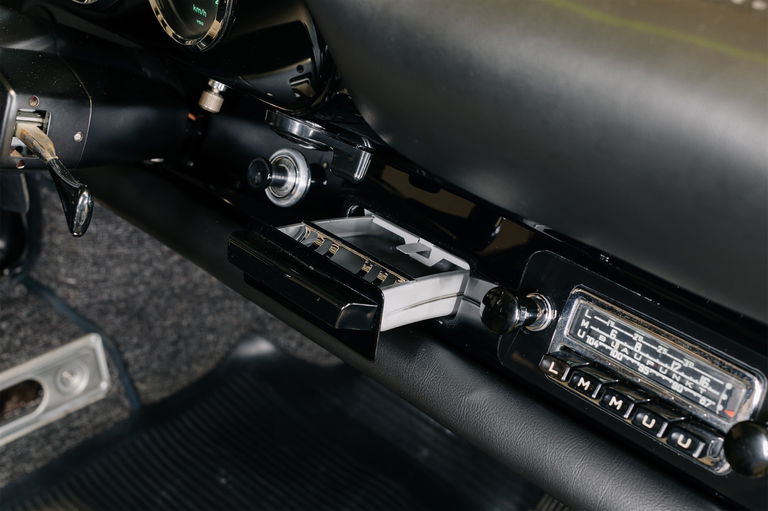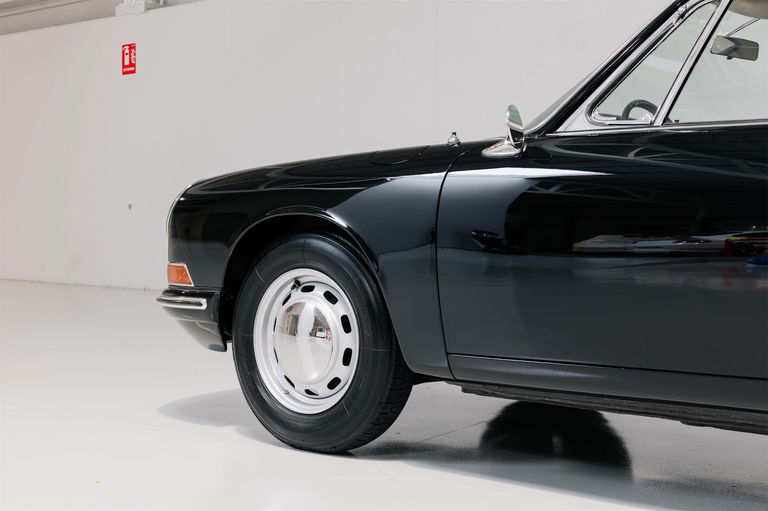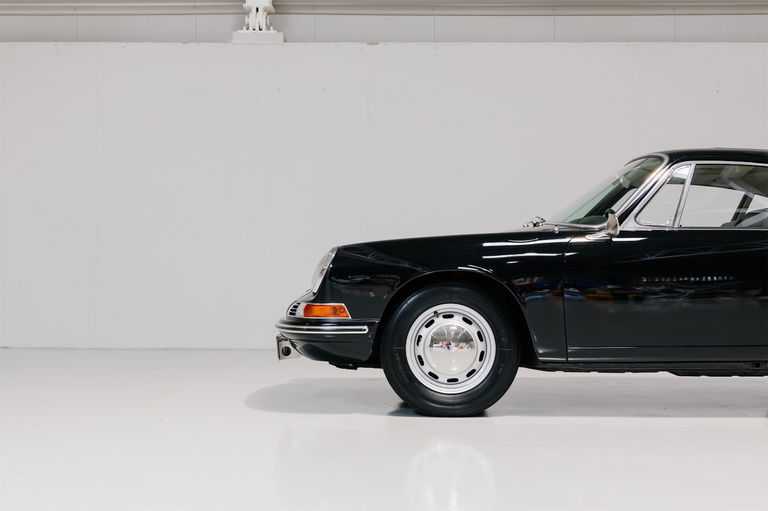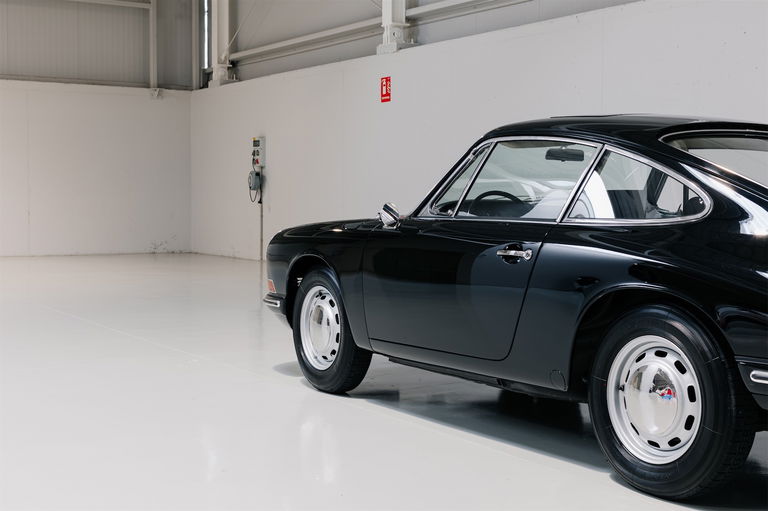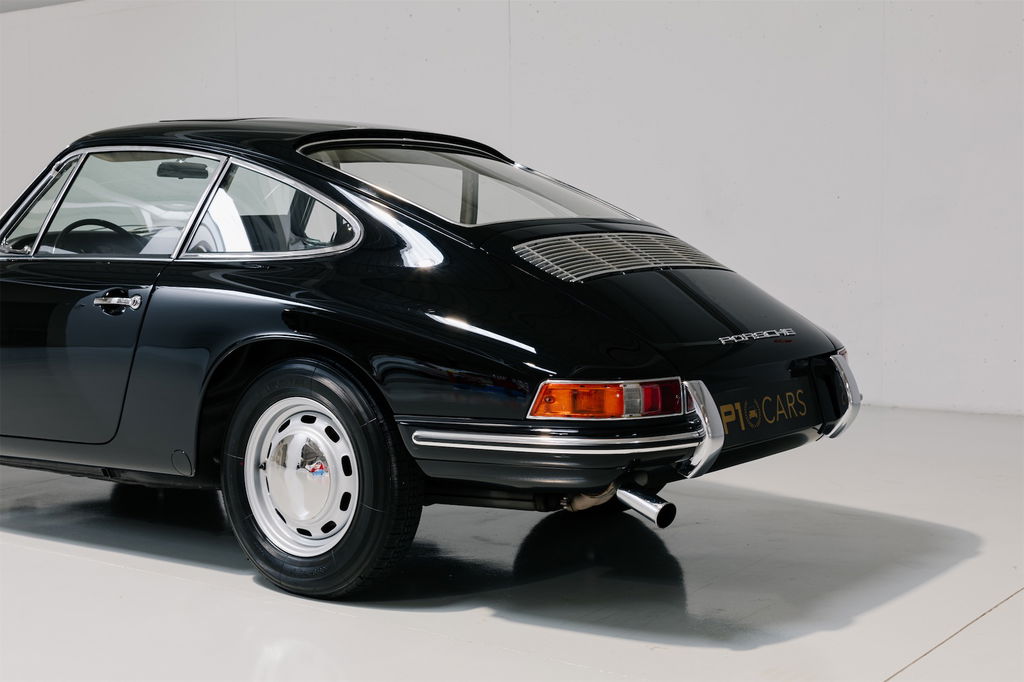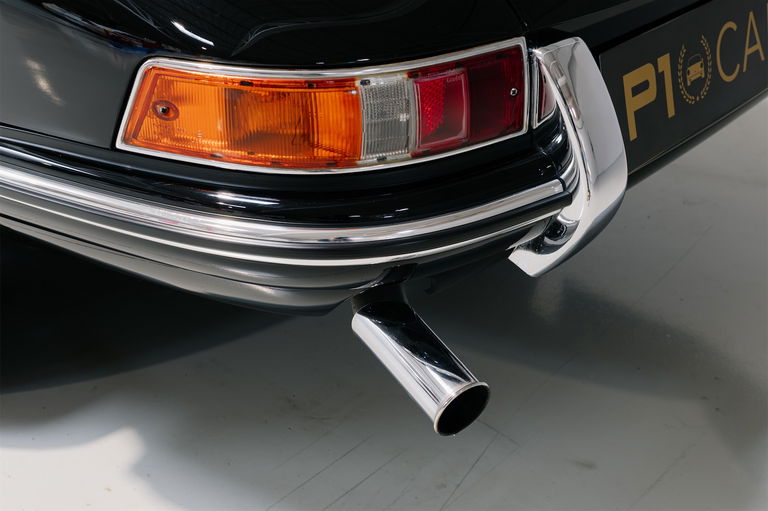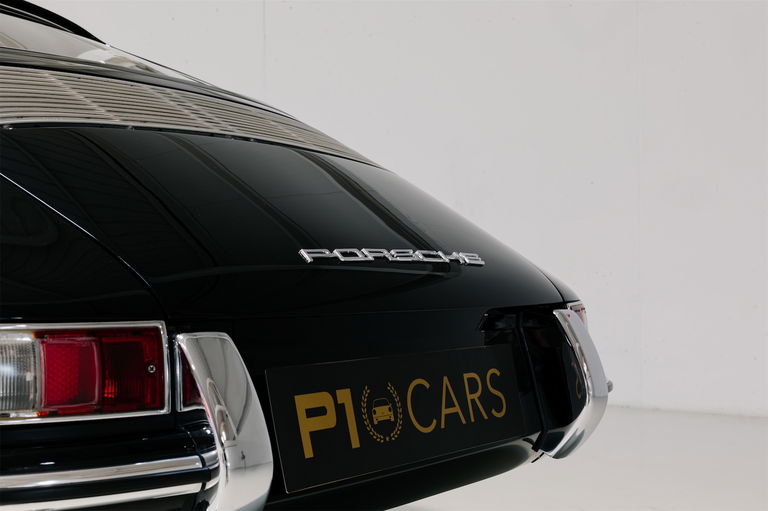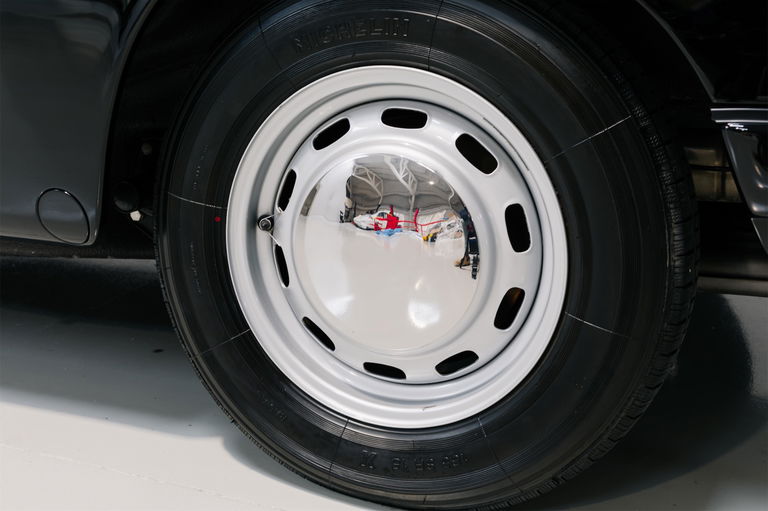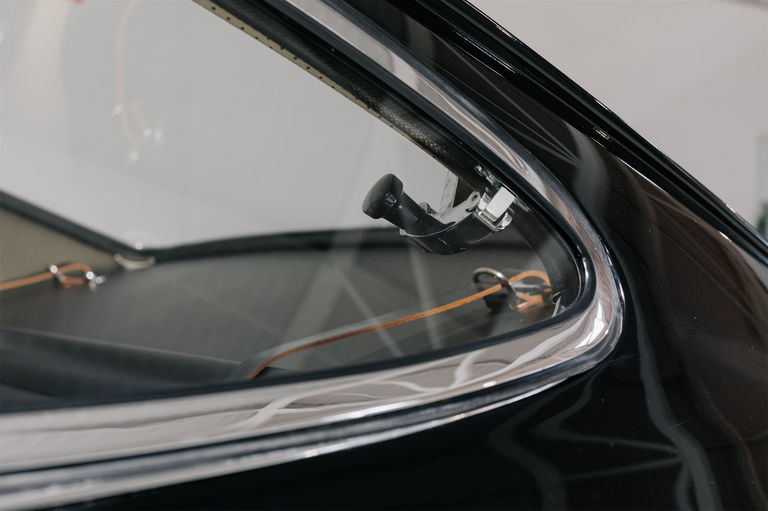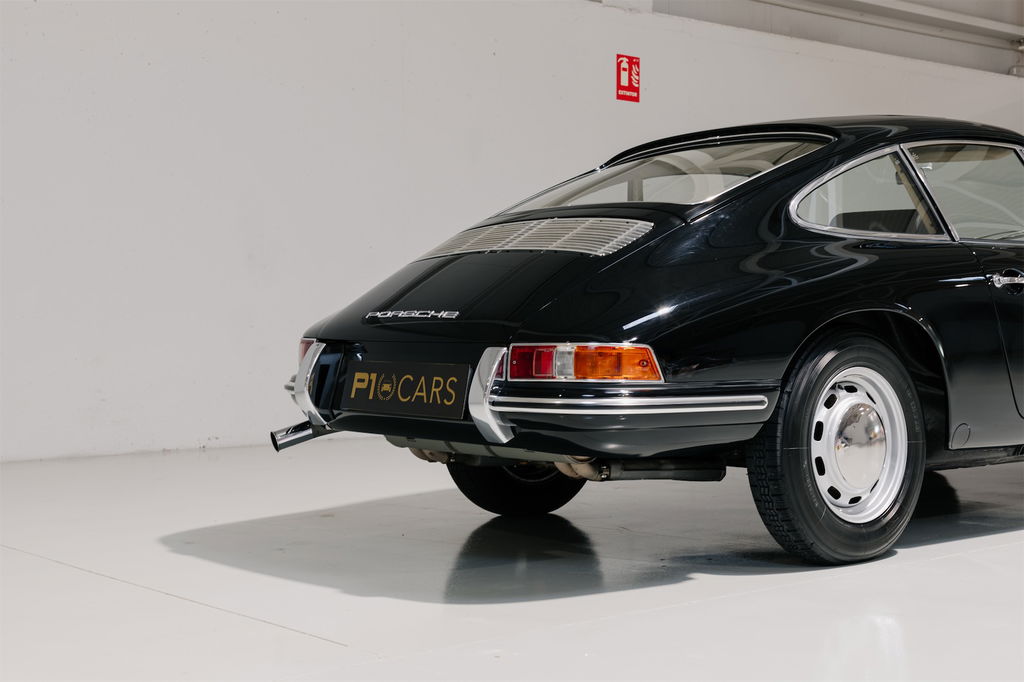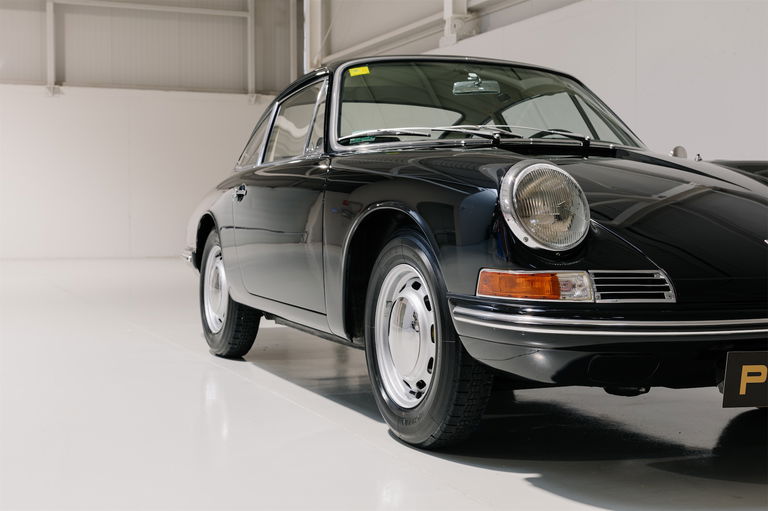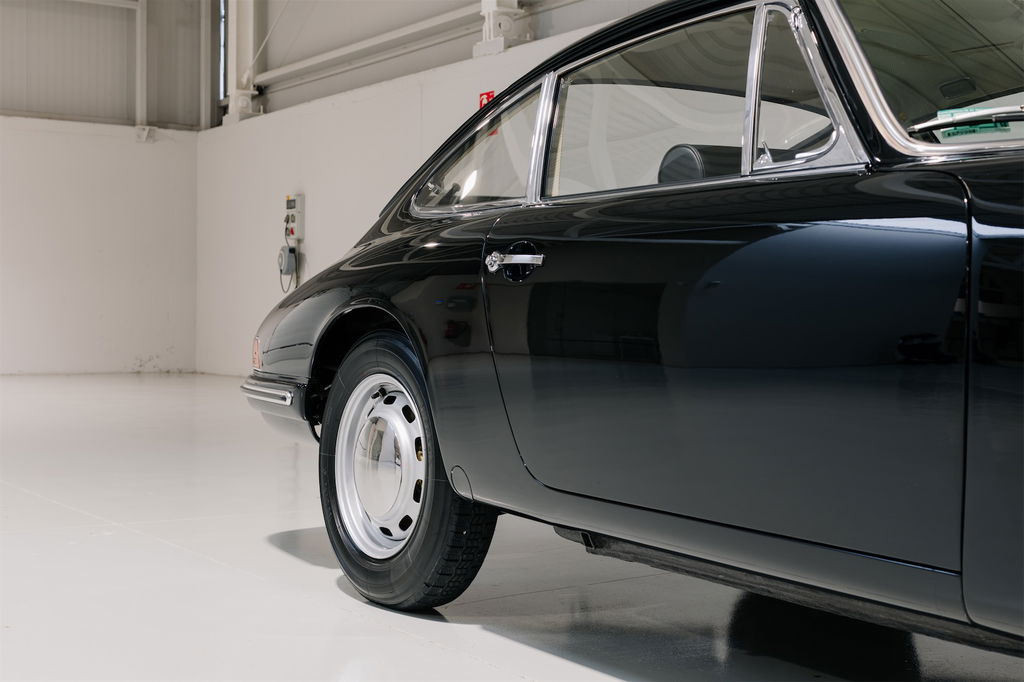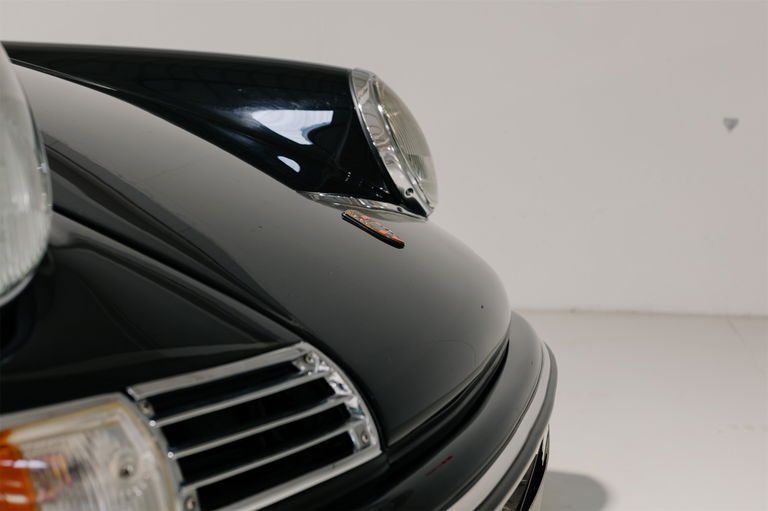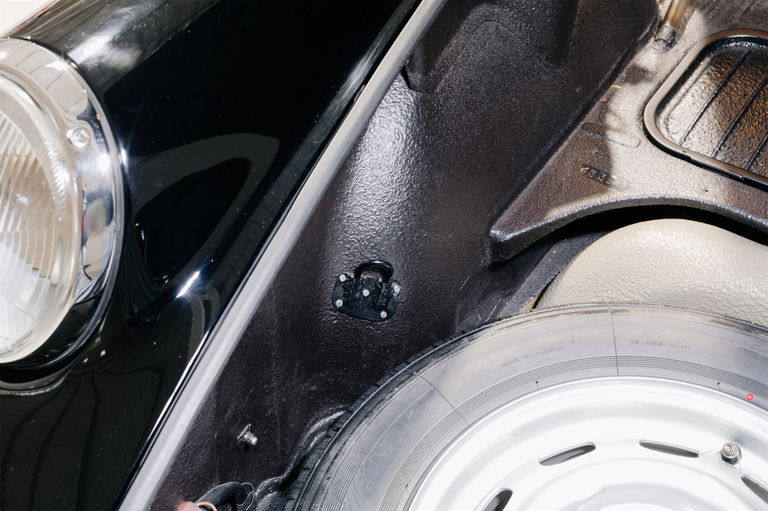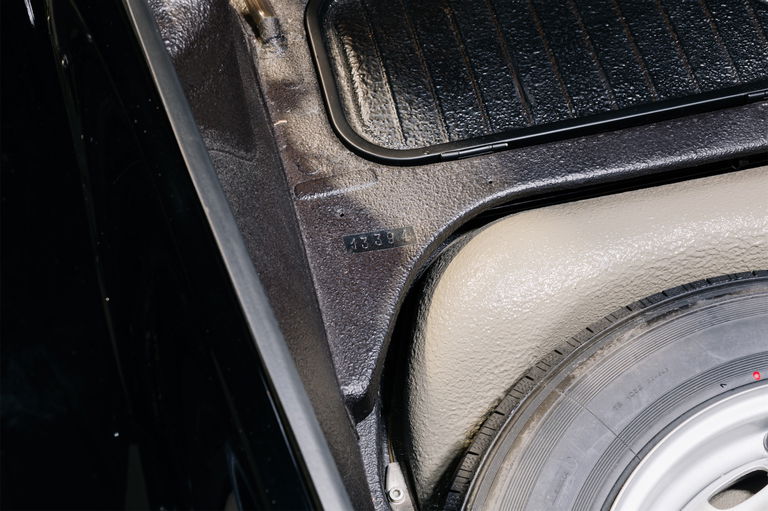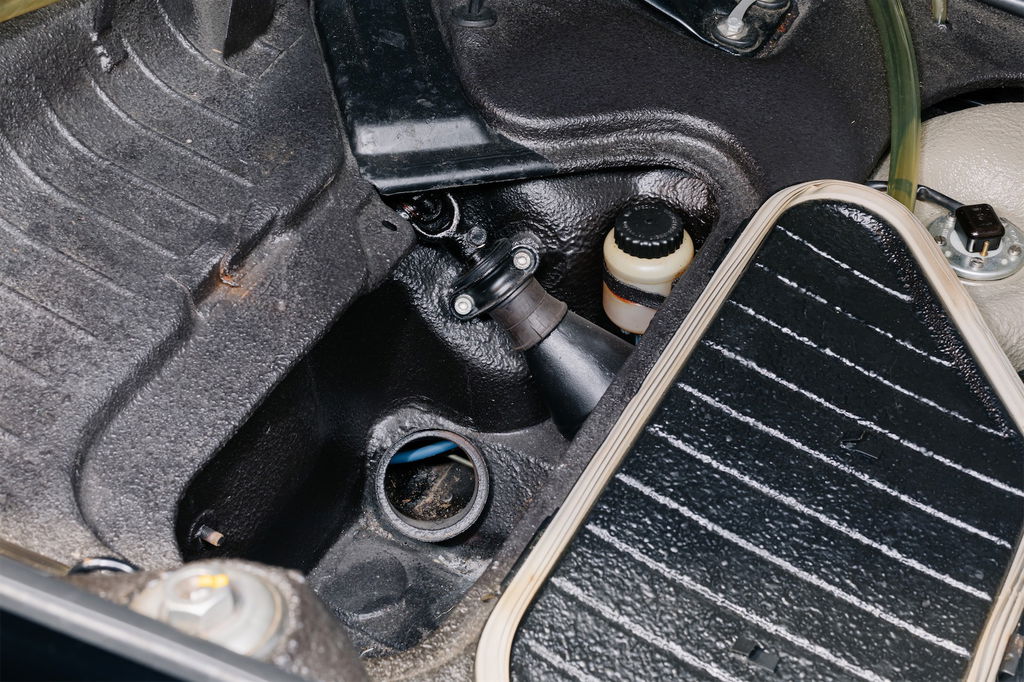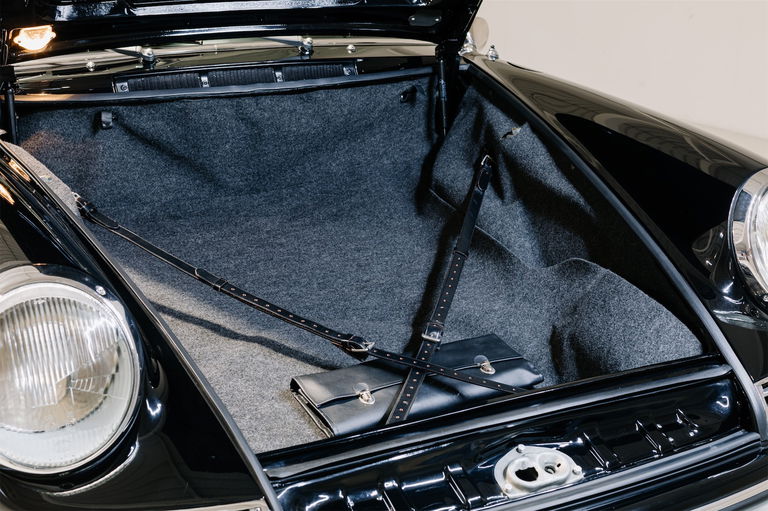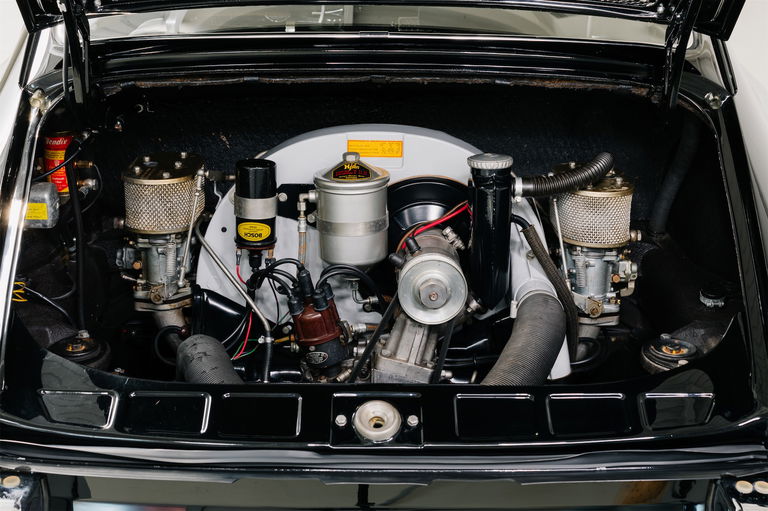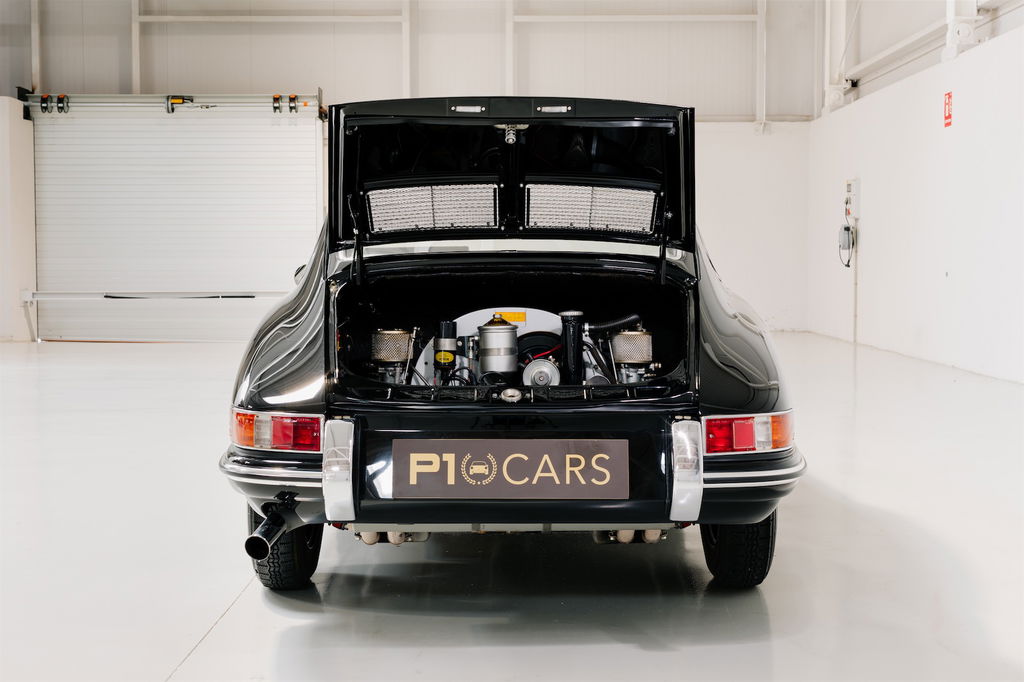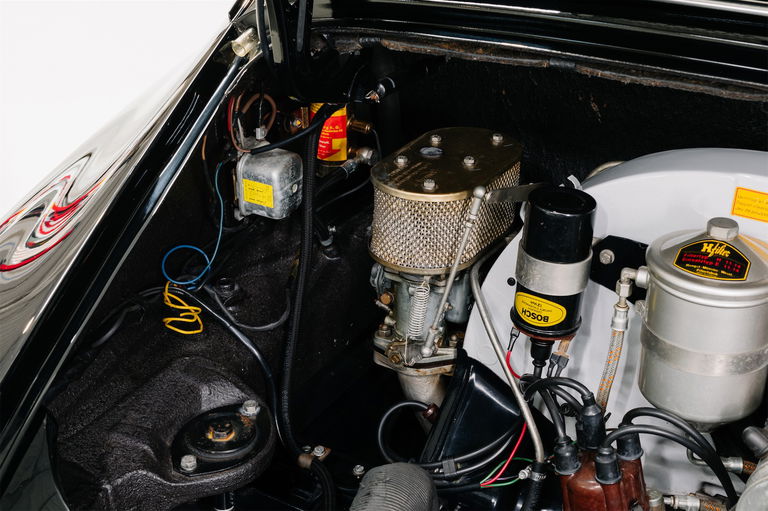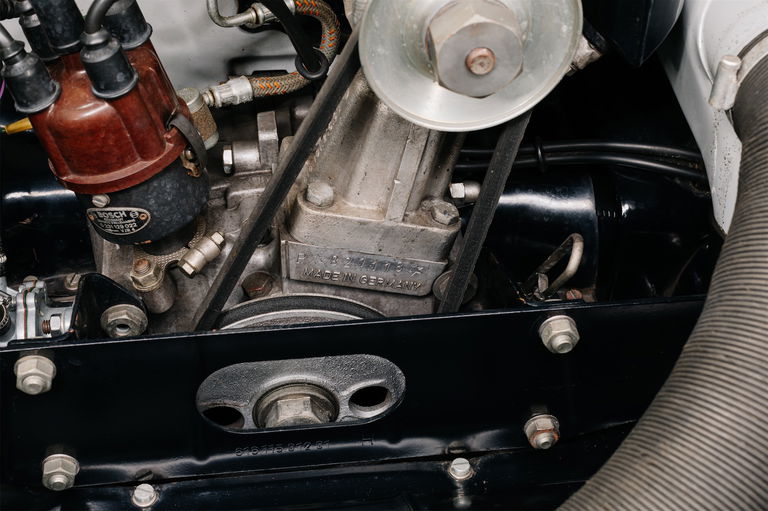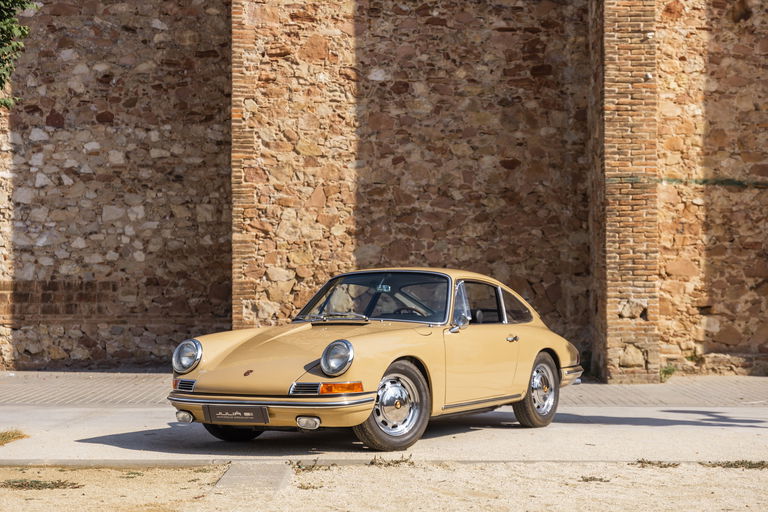Performing a top-quality restoration in a classic car is never an easy task, but it becomes even more difficult when it is a Prototype, as most of what’s presented in it is hand-crafted or specially made for it. Mr. Frick travelled to the Porsche factory to gather all information regarding 13394. Said by his own words, this is what he found out:
“This prototype has several features not found on production 912 Porsches. Its mechanical sunroof is operated by a crank handle, which employs spur and bevel gears, enabling the sunroof panel to lower and slide forward. (The production 911/912 sunroof, in contrast, is electric; it lowers and opens to the rear.) Because of its unusual sunroof design, this car has, concealed behind the headliner, hand-formed wooden platforms for the sun visors. A similarly shaped block supports the interior mirror. In the dashboard, three gauges with 356 style bezel are fitted. Also in evidence is a hand-cut steering lock, suggesting that such devices were tested on this vehicle. In the trunk are six sturdy hooks, two fastened to each of the inner fender wells, and two attached to the latch plate. The hooks are held in place by sheet metal screws, indicating that this was the first car so equipped. (A few very early production cars have similar hooks welded in position.) Members of the factory vehicle research team active during the 901/902 development state that they often fitted the four cylinder prototypes with extra fuel containers in the trunk for long distance testing. It is though that the six hooks were initially installed for this purpose.”
“Additionally, it is believed that some long distance testing of chassis components was done utilizing this car. The engine is an air-cooled, horizontally opposed, 1.6 Liter pushrod four cylinder unit producing 95 DIN horsepower, taken unaltered from the 356 SC.”
After its restoration, it was displayed in several Concourses and events. It took first in class at Amelia Island. It was then sold to a private gentleman, from Massachussets, Mr. Adrian Vanzon in 2006. In 2013 it was brought back to Europe, where it has been part of a collection since.
Continue reading
